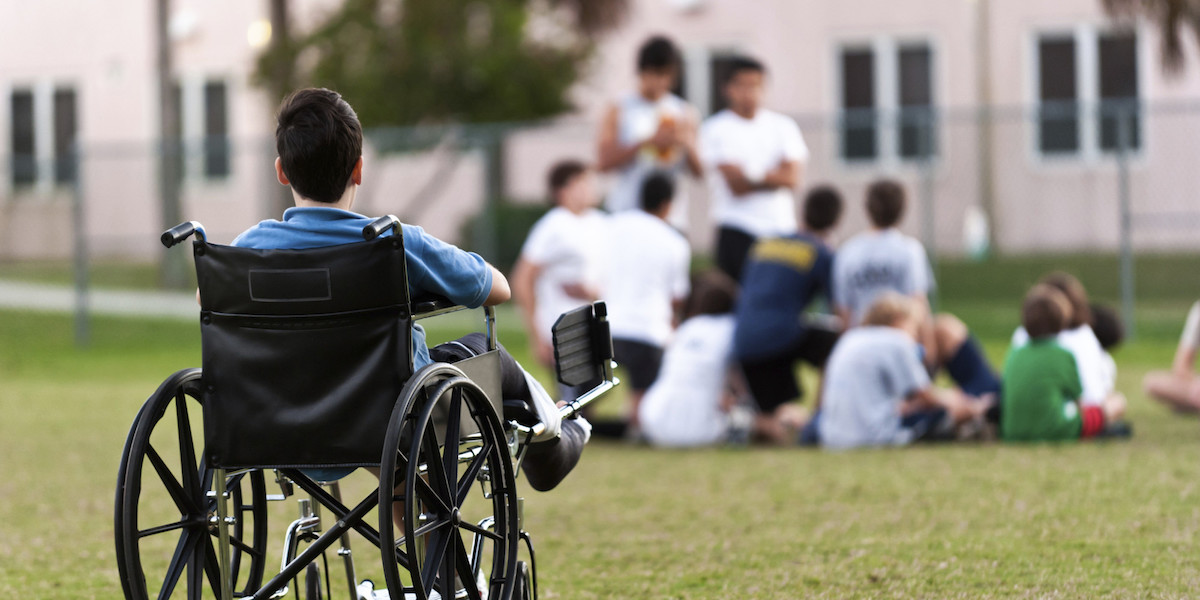The news just broke that the 9th Circuit court has ruled on two cases with major consequences to the internet, how it is built, and how people use it. The rulings are a huge mistake in interpretation of the law and should be appealed immediately. However, work is currently being done to improve the Americans with Disabilities Act that would in fact make these rulings moot. The question is, which will happen first? Whether it is an updated ADA or appeals, it is still not soon enough for people with disabilities.
“Place of public accommodation”
The rulings were on Earll v. eBay and Cullen v. Netflix. In both cases the Ninth Circuit decided that internet based business like the defendants are “not connected to any physical place” according to Title III of the ADA†. This means that since neither Netflix nor eBay have a physical storefront for purchasing or consuming their goods, they are not required to comply with making their websites accessible.
In both cases the plaintiffs are coming to court from the perspective of hearing impaired users. In Earll v. eBay the plaintiff wanted to be an eBay seller, but eBay’s verification process required an audio based step the plaintiff could not complete. In Cullen v. Netflix the plaintiff was requesting closed captioning be provided for all Netflix videos.
To me, these are open and shut, but I guess I’m not inline with what the court feels.
Why this is wrong
The ADA was first created before there was the internet we know. It was created when shopping from home meant opening up the Sears catalog and calling a phone number. Under the ADA, Sears needed to provide technology for their customers who were hearing impaired to also place orders. It is also good business practice to accommodate disabled users.
Let’s ask the question, what are eBay, Amazon, Zappos and their ilk? Are these not in fact the internet’s Sears catalogs? The difference between the two methods of shopping from home are the way orders are placed. Instead of calling into a call center and talking to a person, we fill our “carts” as if we were walking through a physical store and use the self-checkout system. While there is no physical store to walk into to purchase these products, it remains the same base functionality. Sears needed to accommodate people in it’s call center. Grocery store self-checkouts need to accommodate disabled users as well.
The ADA came about before the idea of consuming our media online. In fact, it wasn’t possible to listen to radio or view television over the internet. Now with people cutting cable cords or streaming music instead of buying albums, we need to make sure we accommodate all users.
Under the ADA, television stations are required to have closed captioning on all their shows regardless if they are over the air or cable. When Dish and satellite services for television came about, the standard held. It was still TV and there is no “place of public accommodation” for TV stations. Yes, they have buildings and offices in which they broadcast from. So does Netflix. Netflix has replaced our video rental stores which had to accommodate people. Netflix, and all streaming video services, are a combination of new TV channels and video rental services.
Rules that apply to their predecessors under the ADA must apply to the internet age counterparts.
I will admit if you read the words of the ADA, the Ninth Circuit has ruled on what is said. However, courts have long held precedence that the words themselves are open to interpretation in order to reflect the intent of the authors. If we look at the intent of the words that were written before the internet, then we can see that the words themselves do apply to internet based businesses and the ruling is in fact incorrect.
Legalized discrimination
What the Ninth Circuit has done by issuing these rulings is defined a method of legalized discrimination. They have declared that the disabled users are in fact second class citizens on the internet. They may recognize that they are real people when our disabilities are in their face and they can’t ignore us without being rude. But out of sight, out of mind; if they can’t see us, they can feel unashamed to treat us differently as if we don’t really matter (Note: this applies to racism, sexism, ageism as well).
Roughly 20% of the population qualifies as being disabled (not necessarily for government disability aid). Nearly 100% of people have a disability. Do you wear glasses? You have a disability. Do you have to turn the volume up on the TV to hear it? You have a disability. Do you struggle to read? You have a disability. The list of things that remove us from the societally accepted normal physical condition and puts into the list of people who have a disability is long and virtually endless. This doesn’t mean we are all disabled. Disabled is determined by how it affects our quality of life and well being.
The reality is we are all perfect in how we are, there is no normal, and if we don’t enable and protect those who need assistance we are not a civil society. Personally, I’d like to live in a civil society.
Citations
† JD Supra
Image: Juan Monino

